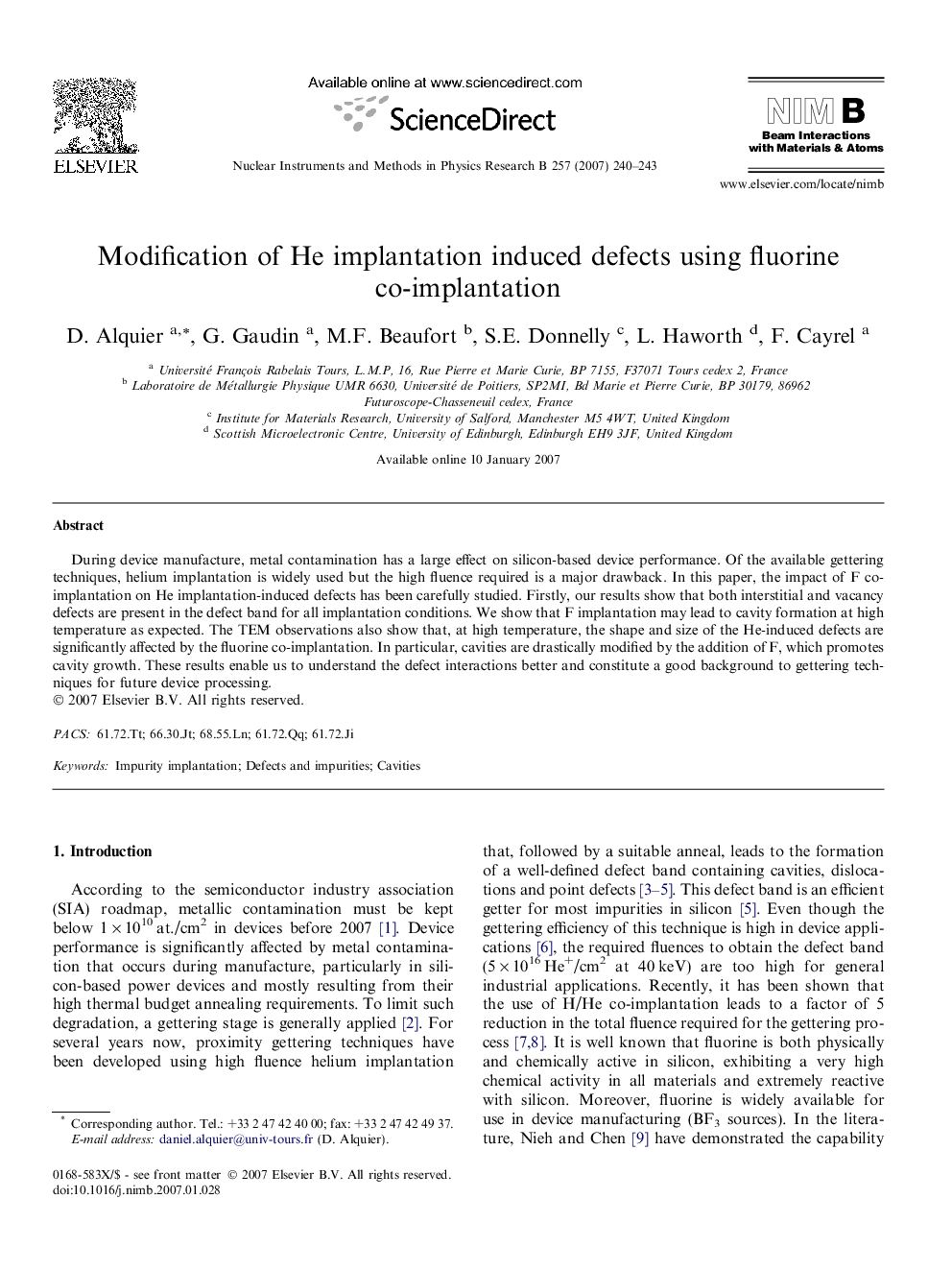| Article ID | Journal | Published Year | Pages | File Type |
|---|---|---|---|---|
| 1684775 | Nuclear Instruments and Methods in Physics Research Section B: Beam Interactions with Materials and Atoms | 2007 | 4 Pages |
Abstract
During device manufacture, metal contamination has a large effect on silicon-based device performance. Of the available gettering techniques, helium implantation is widely used but the high fluence required is a major drawback. In this paper, the impact of F co-implantation on He implantation-induced defects has been carefully studied. Firstly, our results show that both interstitial and vacancy defects are present in the defect band for all implantation conditions. We show that F implantation may lead to cavity formation at high temperature as expected. The TEM observations also show that, at high temperature, the shape and size of the He-induced defects are significantly affected by the fluorine co-implantation. In particular, cavities are drastically modified by the addition of F, which promotes cavity growth. These results enable us to understand the defect interactions better and constitute a good background to gettering techniques for future device processing.
Related Topics
Physical Sciences and Engineering
Materials Science
Surfaces, Coatings and Films
Authors
D. Alquier, G. Gaudin, M.F. Beaufort, S.E. Donnelly, L. Haworth, F. Cayrel,
